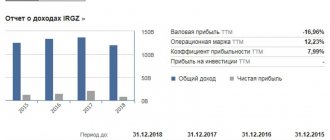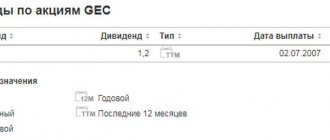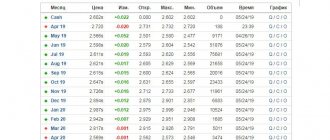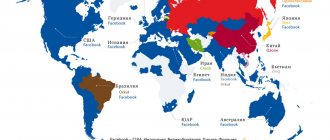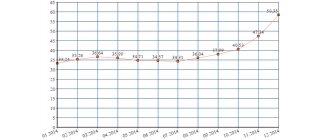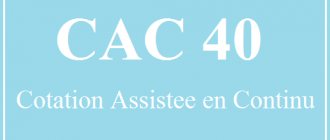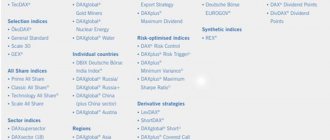Greetings, my readers! I think many have come across the proposal of the Grail for trading. Perhaps some even believed and bought? Were you disappointed at the first series of stops that halved your deposit? If so, it was a painful lesson. But now you are personally convinced that there is no Grail in Forex, as in any other market.
But there are obedient instruments whose behavior is stable and predictable, for example EUR CHF. What causes such positive characteristics, we will now consider together.
About these currencies
The international symbol for the euro currency is €. It has existed since 1999, and came into circulation in cash in 2002. The component of 1 € is 100 cents. The issuer of the currency is the ECB.
The euro circulates in 19 jurisdictions within the European Union. There, the euro is the only official means of payment. It is used as a national currency in 9 other countries.
As a result, more than 300 million European citizens operate with EUR. The cost of issuing the euro is comparable to the US dollar.
The Swiss franc is issued, of course, in Switzerland, as well as Campione d'Italia and Liechtenstein. Issued by the Swiss Mint since 1850. It does not have a generally accepted letter symbol, like the euro. Found under the abbreviations ₣, Fr or sFr. There are three other known names for the franc:
- German Franken.
- Franz. and retro-Romanesque franc.
- Italian Franco.
The variety of names is due to the presence of four official languages within Switzerland. In addition, in trading jargon the currency is known as Swissy. One franc is divided into 100 Swiss rappen.
Both EUR and CHF currencies are included in the international CLS system for continuous conversion transactions between countries that are members of the IMF.
Swiss franc exchange rate
Swiss frank
– the official currency of Switzerland. Bank code is CHF. 1 franc is equal to 100 rappen or centimes - the difference in the name is due to the fact that Switzerland is a country in which several languages are considered official. Banknote denominations: 1000, 200, 100, 50, 20 and 10 francs. Coins: 5, 2 and 1 franc, as well as 50, 20, 10 and 5 rappen.
The obverse of banknotes traditionally features portraits of prominent Swiss figures. For 1,000 francs - Jacob Burckhardt, a cultural scientist who stood at the origins of this science as an independent discipline, for 200 - the writer Charles Ferdinand Ramus, for 100 - Alberto Giacometti, sculptor, painter and graphic artist of the first half of the 20th century, for 50 - Sophie Teuber-Arp , the only woman in the franc, artist and sculptor, representative of Dadaism and abstractionism in art, 20 - Swiss-French composer and music critic Arthur Honegger, 10 - French architect of Swiss origin, artist and designer, pioneer of modernism Le Corbusier. In addition, Swiss francs vary in size: the higher the denomination of the bill, the larger it is.
The obverse of Swiss coins is decorated with the image of the Roman goddess of freedom, Libertas. On the back there are only numbers indicating the denomination, abbreviation Fr. (franc) and Latin phrases: Helvetia and Confederatio Helvetica - the Roman name for Switzerland. The country's bank code is derived from the first letters of this name.
The modern Swiss franc dates back to May 7, 1850. Until this day, the country did not have a single currency system: 25 cantons and half-cantons, 16 cities, and abbeys issued their own money. There were about 860 types of coins of various values and denominations in circulation. Moreover, the majority of money circulation came from foreign money. The situation was changed by the constitution of 1848, according to which a single national currency was introduced.
The initial exchange rate of the Swiss franc was equal to the French one. In 1865, Switzerland joined the so-called Latin Union along with France, Belgium and Italy. According to the agreement, the exchange rate for national currencies was set at 4.5 g of silver for 0.290322 g of gold. In fact, it was the first single currency system that united a number of European countries. Despite the fact that by 1920 all other participants, as a result of the First World War, no longer respected the original agreements, and in 1927 the union collapsed, Switzerland adhered to the accepted gold standard until 1936, when, due to the Great Depression and the global financial crisis, the Swiss The franc was devalued by 30%, following the British pound sterling, the French franc and the US dollar.
In 1944, Switzerland joined the Bretton Woods monetary system. The franc exchange rate was set at 4.30521 per dollar, which was equal to 0.206418 grams of pure gold. Thus, even despite two world wars of the twentieth century, for almost a hundred years the Swiss currency has become more valuable than it was during the Latin Union. In 1949, the rate was 4.375 francs per dollar, or 0.203125 grams of gold. It remained this way until the Jamaican currency system replaced Bretton Woods, which set it free to float in 1967.
But even as a freely convertible currency not tied to precious metals, the Swiss franc has always been considered a haven for investment during crises: the Swiss Central Bank was obliged to hold in its reserves at least 40% of the gold backing of the volume of money issued in circulation until May 1, 2000 the year when the relevant law was repealed as a result of a nationwide referendum.
After the introduction of the single European currency, the franc is closely linked to the euro; as a rule, its quotes change in the same direction.
For the spring of 2021, the dollar is worth about 0.95 Swiss francs. At the same time, the Swiss authorities expressed concern about the high exchange rate of the national currency, which puts the state at a disadvantage in foreign trade. Moreover, the Central Bank promised to carry out foreign exchange interventions whenever the franc rises above the 1.2 euro mark, buying up foreign currency.
On January 15, 2015, the central bank lifted the exchange rate threshold for the euro, which in a few minutes increased the exchange rate of the Swiss franc by 20-30%, which caused a shock in the stock market.
Thus, for the Forex market, the Swiss franc remains one of the main currencies, interest in which is caused, on the one hand, by the traditional strong economy of the country, primarily the banking sector, and on the other hand, by possible speculative operations taking into account the actions of the Central Bank on the open market.
Currency Converter
The arrangement of tickers in the EUR/CHF cross rate means that by paying francs, you can buy euros, and by selling euros, accordingly, you can get francs. The EUR/CHF exchange rate reflects how many francs you need to give to get 1 euro.
Depending on the broker's rules, you can see the rate up to 4 or 5 digits after the whole value. Using the converter, you will find out in one click how much your deposit is worth in the currency of interest, including rubles at the rate of the Central Bank of the Russian Federation. Exchange quotes from the Central Bank of Russia are updated daily.
Forecast of the franc to ruble exchange rate for the week and month
| date | Day of the week | Forecast | Rise/fall |
| 27.05.2021 | Thursday | 81.22 ₽ | -0.84 ₽ |
| 28.05.2021 | Friday | 81.18 ₽ | -0.04 ₽ |
| 29.05.2021 | Saturday | 81.19 ₽ | +0.01 ₽ |
| 30.05.2021 | Sunday | 81.14 ₽ | -0.05 ₽ |
| 31.05.2021 | Monday | 81.15 ₽ | +0.01 ₽ |
| 01.06.2021 | Tuesday | 81.13 ₽ | -0.02 ₽ |
| 02.06.2021 | Wednesday | 81.11 ₽ | -0.02 ₽ |
| 03.06.2021 | Thursday | 81.09 ₽ | -0.02 ₽ |
| 04.06.2021 | Friday | 81.08 ₽ | -0.01 ₽ |
| 05.06.2021 | Saturday | 81.1 ₽ | +0.02 ₽ |
| 06.06.2021 | Sunday | 81.08 ₽ | -0.02 ₽ |
| 07.06.2021 | Monday | 81.05 ₽ | -0.03 ₽ |
| 08.06.2021 | Tuesday | 81.05 ₽ | 0 ₽ |
| 09.06.2021 | Wednesday | 81.03 ₽ | -0.02 ₽ |
| 10.06.2021 | Thursday | 81.03 ₽ | 0 ₽ |
| 11.06.2021 | Friday | 80.98 ₽ | -0.05 ₽ |
| 12.06.2021 | Saturday | 80.97 ₽ | -0.01 ₽ |
| 13.06.2021 | Sunday | 80.99 ₽ | +0.02 ₽ |
| 14.06.2021 | Monday | 80.96 ₽ | -0.03 ₽ |
| 15.06.2021 | Tuesday | 80.95 ₽ | -0.01 ₽ |
| 16.06.2021 | Wednesday | 80.93 ₽ | -0.02 ₽ |
| 17.06.2021 | Thursday | 80.92 ₽ | -0.01 ₽ |
| 18.06.2021 | Friday | 80.9 ₽ | -0.02 ₽ |
| 19.06.2021 | Saturday | 80.9 ₽ | 0 ₽ |
| 20.06.2021 | Sunday | 80.88 ₽ | -0.02 ₽ |
| 21.06.2021 | Monday | 80.85 ₽ | -0.03 ₽ |
| 22.06.2021 | Tuesday | 80.83 ₽ | -0.02 ₽ |
| 23.06.2021 | Wednesday | 80.86 ₽ | +0.03 ₽ |
| 24.06.2021 | Thursday | 80.84 ₽ | -0.02 ₽ |
| 25.06.2021 | Friday | 80.81 ₽ | -0.03 ₽ |
Over the previous week, the value of the Swiss franc in the Russian ruble increased by 0.04 ₽ (four kopecks). This week the Swiss franc is expected to fall by sixty-five kopecks. After 7 days, the franc to ruble quote will be 81.41 ₽ (eighty-one rubles forty-one kopecks).
Detailed expected changes in the franc exchange rate by day of the week:
- Thursday: Franc selling rate will be 81.55 ₽
- Friday: Franc selling rate will be 81.53 ₽
- Saturday: Franc selling rate will be 81.54 ₽
- Sunday: Franc selling rate will be 81.51 RUR
- Monday: Franc selling rate will be 81.44 ₽
- Tuesday: Franc selling rate will be 81.4 ₽
- Wednesday: Franc selling rate will be 81.41 ₽
According to the Central Bank of the Russian Federation, a decrease in the value of the franc against the ruble is predicted over the course of the month. In the first half of March, the exchange rate will be eighty-one rubles 81.00 rubles 8.00 kopecks. By the end of the month, the franc exchange price will fall by 1.25 rubles and amount to 80.81 rubles (eighty rubles eighty-one kopecks).
Analysis and what affects the course
Euro is the currency of a young, unestablished community. The status of the EU is not stable. The EU public debt is quite high - slightly more than 80% of GDP.
Indicators:
- EUR inflation at 0%.
- The interest rate is low, at the end of 2021 - 0%.
- Annual GDP growth is unstable, for example in 2015 it was 1.3%, in 2016 it remained the same, in 2021 it jumped to 2.4%.
Switzerland is economically very stable. Since 1920, the law has ensured that the currency is backed by gold reserves of at least 40%. The state specializes in industry, trade and financial services for investors around the world.
Indicators:
- Inflation is at 0%.
- The interest rate is low or negative, at the end of 2018 -0.75%.
- Annual GDP growth 1.1%.
CHF exchange rate changes are influenced by 2 factors:
- Economic shocks or normalization of the external economy.
- The policy of the native Central Bank.
As a result, if times are bad for the euro, investors will pump some of their money into the franc. The EUR/CHF rate is falling as the franc, which ranks second in the pair, is growing.
A similar situation is true when troubles occur throughout the global economy.
Sometimes, if the home currency appreciates too much, Switzerland will devalue the franc.
EUR/CHF quotes are influenced by:
- Bank rates - Switzerland and EU.
- Trade balances and investment inflows. The injections are especially important for Switzerland.
- Exchange prices for gold.
As well as economic indicators - business activity and employment, internal indices.
How to make money on the course
To make money on the EUR/CHF pair, you should track important events in the financial calendar, which is available on the website of each broker. This is necessary to refrain from trading before the release of significant news. At other times, any classical approaches are suitable - from patterns and swing models to wave theories and technical analysis figures.
Due to the spread of 4-5 points and above, the EUR/CHF pair is not suitable for scalping. Especially considering the habit of overcoming an average of 150 points in two weeks.
Interesting facts about the trading pair
The country is characterized by a stable and strong economy and is among the top 5 safest countries in the world, so it is not surprising that the franc also has similar properties.
Interesting facts about the Euro-Swiss franc asset that are useful for every trader to know:
- Both currencies occupy the second and fifth places in terms of world trading volume, respectively, and the pair itself is characterized by a high level of liquidity, the daily trading volume is quite large;
- The euro is the common monetary unit in the eurozone, uniting 19 countries, and is one of the three world reserve currencies;
- The Swiss economy is characterized by calm, safe development with low unemployment, a highly qualified workforce and an excellent GDP per capita;
- There is a close correlation with the dollar-Swiss franc pair, which is due to the stability of economic and political ties between the European Union and the United States with Switzerland.
Decoding the components of the EUR/CHF currency pair
The asset contains two key currencies, one of which is the euro, the common monetary unit of many European countries, and the other is the franc, which is the national Swiss currency. In trading circles it is referred to as “Swissy”.
Switzerland is in the top 20 world countries with high levels of industrial production, GDP per capita, and export volumes.
The euro-Swiss franc pair is formed by a direct quote, and an increase in the rate indicates the strengthening of the euro against the quoted franc.
How to access trading this pair
You can trade EUR/CHF by opening an account with a Forex dealer or broker, or by trying a binary options guessing game. True, in BO the odds are against the trader. You can trust me, you can see for yourself.
A word of caution about brokers
When choosing an intermediary for trading EUR/CHF, remember that licenses belonging to the British Isles and Malta, Belize, Cyprus, and Russia are unreliable. You may encounter problems when withdrawing from the deposit, and if you are completely unlucky, then the closure of the broker’s company, its website and the disappearance of your deposit.
When checking, you should trust intermediaries with licenses from the UK, Denmark, Australia, and Germany.
Example deal
At the beginning of the article, I mentioned that EUR/CHF is a technical and obedient instrument. This means that channels, support, and resistance are being worked out perfectly. See what it looks like in practice.
Open the EUR/CHF chart and switch to 15 minutes. What do we see? The impulsive movement is replaced by restrained price corridors.
Another corridor appeared. At its lower border, you can plan to buy EUR/CHF after a local minimum appears. Here, the minimum of 1.1299 was drawn by a red candle, jumping beyond the boundaries of the corridor. The target is the clear horizontal resistance level of EUR/CHF at 1.1321. Stop is 1 point below the low at 1.1298.
The deal is going according to plan, although it is slowing down a little short of reaching the goal. This is a convenient place to move your stop. You can close part of the EUR/CHF buy order.
Transaction support depends on personal style. Some don't even stop. As can be seen from the EUR/CHF chart, the price has reached the target.
Pay attention to the width of the corridors 8-10 points. Now do you understand that pipping is not an option with a spread of 4-8 points on EUR/CHF? Therefore, traders practice swing, medium-term or long-term trading.
Features of trading the EUR/CHF currency pair
It is one of the most stable assets and has a low degree of volatility - no more than 60 points during the day. It is recommended to enter into transactions with this currency pair during the European session; it demonstrates high liquidity. The same factor determines its security status.
The price range can always be easily predicted, despite large-scale trading volumes, because the economies of the EU and Switzerland are interconnected with each other. To analyze entry and closing points, it is best to focus on real support and resistance levels.
EUR/CHF is suitable for any time interval, which allows you to open both short-term and long-term transactions. The movement of the chart can only be observed in moments of geopolitical tension or in pronounced risk situations, for example, an influx of capital in franc equivalent.
Despite the temporary nature of breakthroughs, which can last up to 2 months, this allows currency traders and businessmen from the binary options segment to make good money.
You can register with the Finmax broker and make a profit from the first transactions, learn trading and master effective strategies.
How to analyze and enter into transactions on EUR/CHF?
When analyzing the market and currency dynamics, you must always follow news and events in the eurozone, decisions and reports of the Central Bank and statements of officials and key government officials.
The main factors influencing the exchange rate of a trading asset are the following:
- Inflationary processes - when the index falls, quotes will rise and vice versa;
- Features of monetary policy and interest rate changes - if the exchange rate
- The Central Bank is tightening and the key indicator is increasing, this will provoke a weakening of the positions of the currency pair;
- Trade balance data - with a positive balance and a predominance of export volumes, the asset exchange rate will strengthen.
Special attention should be paid to the correlation with the dollar, since the “euro-Swiss franc” can be divided into two intermediate pairs pegged to the dollar.
After analyzing any charts, it is obvious how the American currency has a great influence on the euro and the franc.
Recommendations for trading EUR/CHF for the Forex and binary options markets
When planning to choose this asset for trading, always consider the following features:
- It is beneficial to use for scalping and long-term investing;
- The best time for transactions is 14.00;
- Good response to fundamental factors and technical analysis due to high liquidity and good predictability;
- Can be used by beginners because it has low liquidity and is suitable for training transactions;
- It is characterized by large trading volumes, and price indicators are determined by the influence of political and economic events.
Tensions in the economic or political sphere of the European Union force investors to invest their capital in the reliable franc to protect themselves from risks.
The EUR/CHF asset is a mirror image of USD/CHF, since the movement rate is the same, although in different directions. In the graphs below you can observe the features of the graphs of both variants of pairs in the same time period.
Due to its moderate activity and good predictability, it is convenient to use for beginners who are just getting acquainted with the market and its features. Both in the Forex segment and in the binary trading sector, you can use the “Euro-Swiss franc” and gain trading experience.
Broker FinmaxFX offers favorable conditions for novice traders and a bonus for replenishing an account, so that everyone can comfortably learn, trade and reveal their investment potential.
EUR/CHF chart
A live chart for the EURCHF currency pair is an ideal solution for those who do not want to install MT4 for analysis.
Features of the currency pair
- Average daily volatility is 50-60 points.
- The busiest EUR/CHF trading takes place during the euro session.
- The peak volume falls on the overlap of the European American session.
- The most active day of the week for EUR/CHF is Monday.
- The calmest, even sluggish day is Wednesday.
- EUR/CHF liquidity is high.
- The average spread is from 4 to 6 points.
- Direct correlation with USD/CHF, inverse with silver, gold, platinum, CN50 index, AUD/SGD.
